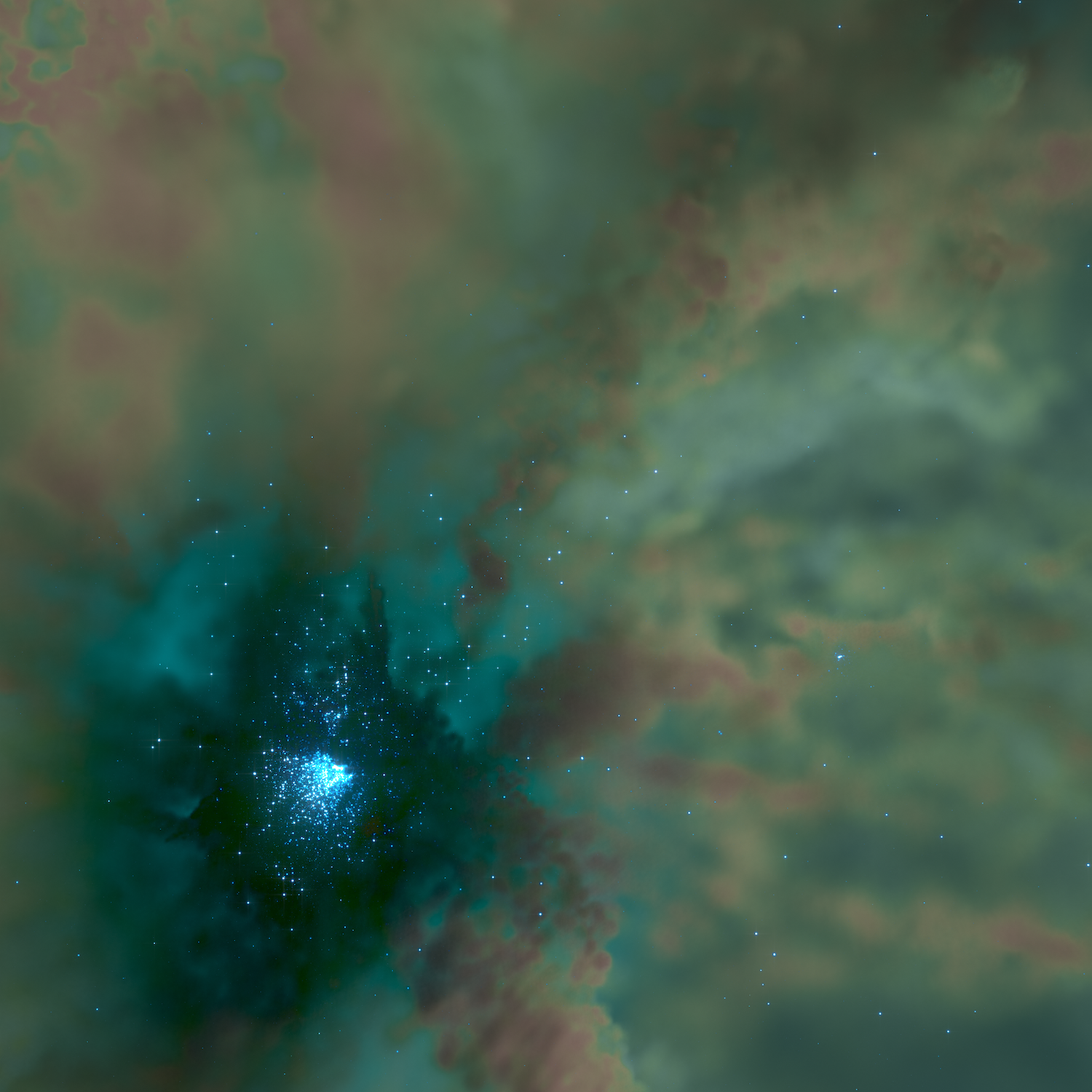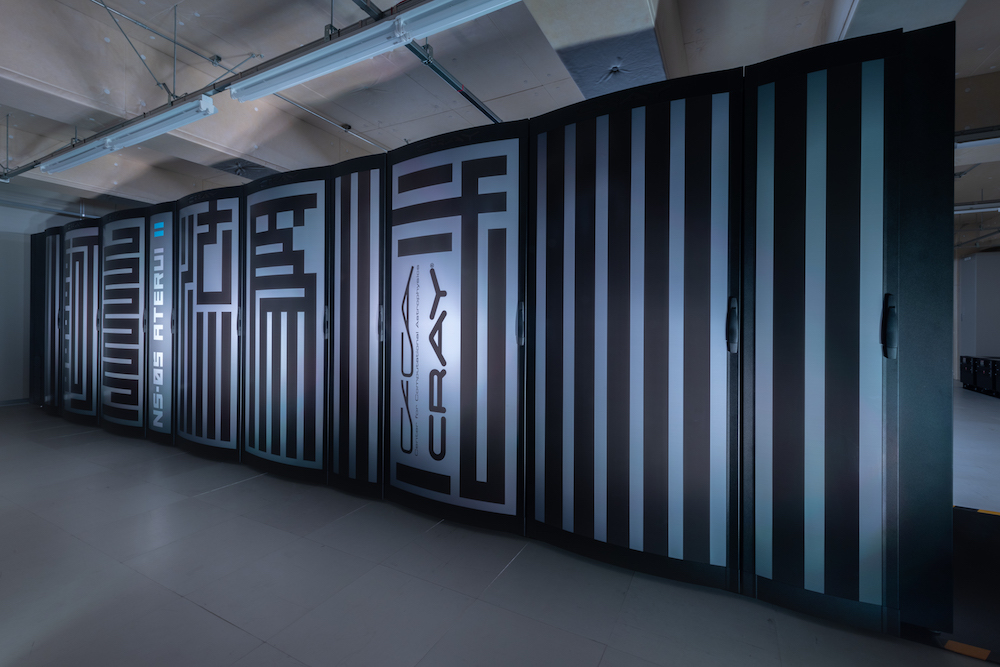The first star-by-star simulations of globular cluster formation show that massive star collisions can start a runaway process resulting in the formation of intermediate-mass black holes. These results can help explain the origins of this rare type of black holes.

Download: [PNG (11 MB)]
The first star-by-star simulations of globular cluster formation show that massive star collisions can start a runaway process resulting in the formation of intermediate-mass black holes. These results can help explain the origins of this rare type of black holes.
Known black holes generally fall into two categories; low mass black holes with dozens of times the mass of the Sun and high mass black holes with masses more than tens-of-thousands of times that of the Sun. However, black holes with masses in between those two are rarely found, and are considered a major mystery in the evolution of black holes.
One possible place to look for intermediate-mass black holes is in globular clusters, self-contained globs of stars in the halo around the Milky Way Galaxy. One of the hypotheses for the formation of black holes in globular clusters is a "runaway collision” of stars in forming star clusters embedded in their parental molecular clouds. To confirm this theory, however, simulations that reproduce the motion of individual stars inside molecular clouds are needed, but have not been possible due to problems with computational techniques and computer capabilities. Previous simulations of globular cluster evolution have reduced computing costs by bundling stars into groups to track their motion. But these simulations could not reproduce runaway collisions.
A team led by Michiko S. Fujii at The University of Tokyo tested a new recipe for intermediate black holes using the world’s most powerful supercomputer dedicated to astronomy, ATERUI II at the National Astronomical Observatory of Japan. Their new simulation code and the performance of ATERUI II have enabled the world's first simulation of the formation of individual stars in globular clusters, accurately reproducing the motion of more than one million stars in the interstellar gas, including their collisions and mergers, without eating up unrealistic amounts of computing time.
The results of the simulation show that runaway collisions of stars occur in the cluster during its formation, eventually forming a massive star with a mass about 10,000 times that of the Sun. Calculations based on stellar evolution theory predict that the massive star would become an intermediate-mass black hole with a mass three to four thousand times that of the Sun. This result provides strong theoretical support for the existence of intermediate-mass black holes in globular clusters.
(May 31, 2024 press release)
Publication Information
Title: "Simulations predict intermediate-mass black hole formation in globular clusters"
Authors: Michiko S. Fujii, Long Wang, Ataru Tanikawa, Yutaka Hirai, Takayuki R. Saitoh
Journal: Science
DOI: 10.1126/science.adi4211
Supercomputer used in this research
For the Use of Contents in This Website
- Contents are to be used with a clear indication of its copyright (e.g. (c) NAOJ.)
- If you would like to use the contents found in this web site, please follow Terms of Use of the Website of NAOJ.
[Related Links]
The University of Tokyo Press Release: Medium and mighty: intermediate-mass black holes can survive in globular clusters
NAOJ Press Release: Simulations Yield New Intermediate Mass Black Holes Recipe

